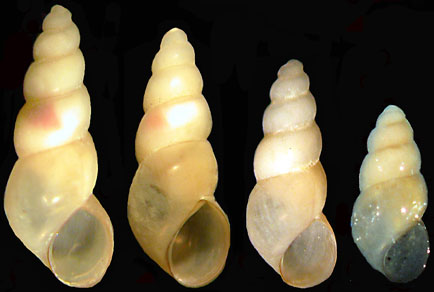Abstract
Heleobia dobrogica is the only gastropod species living in the Movile Cave in Dobrogea, Romania. In the cave there is little oxygen but large amounts of carbon dioxide and methane in the atmosphere, and a large amount of hydrogen sulphide in the water. All the non-predatory animals feed on the chemoautotrophic microorganisms that draw energy from the sulphide hot springs beneath the cave. Five COI mtDNA sequences were used for maximum likelihood phylogeny reconstruction together with eight sequences of cochliopids and two outgroup rissooids from GenBank., Salenthydrobia ferrerii and Peringia ulvae were used as an outgroup for the calibration of the molecular clock. The estimated time of divergence between the two species was 2.172±0.171 Mya. This coincides with the period marking the beginning of the fall in temperature and precipitation that initiated the glacial period in Europe, predating the Pleistocene. Most probably at that time Heleobia dobrogica found a safe shelter within a warm cave. Our results suggest that H. dobrogica is closely related to H. dalmatica, and both species may be congeneric with Heleobops docimus.

